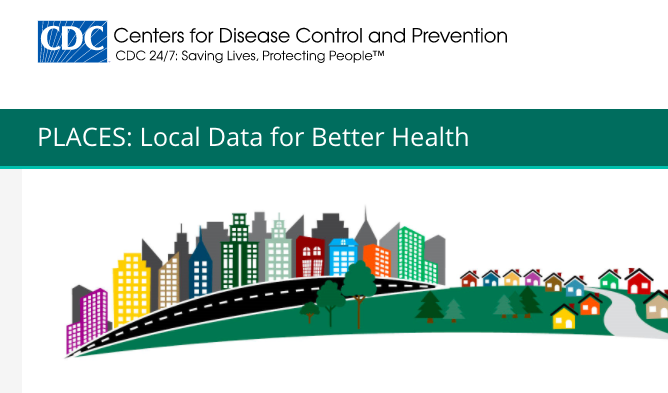Reflections & Hope for 2021
As we move into 2021—amongst a sea of memes bidding 2020 farewell and good riddance—we reflect, identify, and focus on past moments that provide hope for this new year. Below, our IP3 team members each share one thing from 2020 that brings us hope for 2021 and beyond.
Seven Things That Bring Us Hope
2020, COVID-19, and Silver Linings: Perhaps it is a silver lining that longstanding inequities are being brought into such sharp focus. We aren’t alone in acknowledging that coronavirus will change the world permanently. Our hope is that in responding to community needs in the time of COVID-19, communities will simultaneously be able to address and course-correct root causes of inequity, as well as legacies of inequity that we’ve inherited. There is an opportunity now to think about how we, as a society, want to refocus and rebuild. —Roxanne Fulcher, Executive Director
Thriving Together: A Springboard for Equitable Recovery and Resilience in Communities Across America
Resource - Report
Brought to you by Well Being Trust
Transforming Systems for Wellbeing and Equity
Resource - Guide/handbook
Brought to you by Community Commons
Tracking COVID-19's Effects by Race and Ethnicity
Tool - Data/mapping Tool
Brought to you by Urban Institute
A New Environmental Legacy?: The disruptive forces of COVID-19 are inspiring new ways of working and living that decrease our fossil fuel consumption; founding a new imperative for safe, accessible, human-centered public spaces; underscoring issues of environmental justice; reviving interest in green economics; and renewing our appreciation for nature and exploring our world. We, as stewards, have the power to chart a new course: we can change development practices, transition a green economy and address environmental injustices, and co-create a new environmental legacy. —Sara Ivey, Project Manager
We Can Waste Another Crisis, or We Can Transform the Economy
Story - Written
Brought to you by Jacobin
COVID-19, Climate Change and Stewarding a Thriving Natural World
Story
-
 Original
Original
Brought to you by Community Commons
Black Lives Matter: The Black Lives Matter movement this past summer was not a flash in the pan. Dialogue continues and communities are making positive policy changes across the country. As the mother of a black son, I feel that he is safer now, his voice will be heard, and my future grandchildren will know a better world. —Michelle Windmoeller, Communications
Care for Whole-Person Well-Being: The events this year have shone a light on the intersection of physical health, mental health, and the conditions in which we live. (One example: underserved communities are disproportionately affected by COVID-19.) There is more energy and dialogue around mental health and behavioral health care, and in turn whole-person well-being. —Sloan Gingg, Communications Lead & Project Manager
How Does Our Sense of Belonging Shape our Mental Health?
Story
-
 Original
Original
Brought to you by Community Commons
Tracking COVID-19's Effects by Race and Ethnicity
Tool - Data/mapping Tool
Brought to you by Urban Institute
The Voices of Young Stewards: Traditionally, youth do not hold much influence in their communities. However, 2020 has given me hope that everyone, regardless of their age, can make a difference. Advocacy groups have failed for nearly a decade to ban plastic bags in Oregon. However, a group of local high school students successfully convinced the Hillsboro City Council to restrict the use of plastic bags. They then went on to advocate for a state-wide policy. Starting this year, Oregon has banned single-use plastic bags. —Jessica Wong, Project Specialist
Peer-to-Peer Mentoring Advances Success for First Generation College Students
Story
-
 Original
Original
Brought to you by Community Commons
Published on 01/22/2019
Bright Spot: YES! Youth Empowerment Model
Resource - Model Policy
Brought to you by Community Commons
Innovative Initiatives on College Campuses Addressing Food Insecurity
Story
-
 Original
Original
Brought to you by Community Commons
Your Vote is Your Voice: A Toolkit for Youth Justice and Electoral Advocacy
Tool - Toolkit/toolbox
Brought to you by Youth First
Communities in Conversation: 2020 placed a spotlight on our atrophied civic muscle and tears in our social fabric. 2020 also saw a significant increase in the number of individuals and organizations focused on weaving our social fabric anew and building our civic muscle through dialogue. Family tables, zoom rooms, and city parks became the places we sat down and listened for understanding, searched for strengths and value in another's position, and explored our common ground. Groups like Local Voices Network, Living Room Conversations, Weaving Community, and Unite offered us dialogue guides, technologies for hearing one another's stories, and invitations to sit with strangers and neighbors to learn more about who we are. —Stacy Wegley, Senior Associate, Community Initiatives

















.jpg)






